The Jeep Wrangler is undoubtedly one of the most iconic and capable off-road vehicles. Its legendary sturdiness and go-anywhere attitude have made it a decades beloved choice for outdoor adventurers.
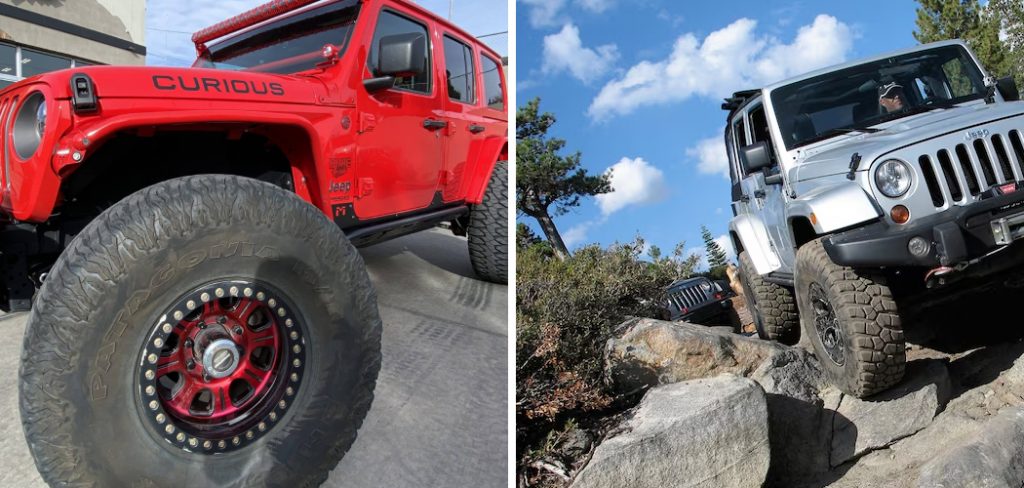
However, despite its rugged good looks and off-road prowess, the Wrangler has long been criticized for its lackluster on-road manners. With its short wheelbase, stiff suspension, and solid front and rear axles, a bone-stock Wrangler rides more like a pickup truck than a modern SUV.
Its bouncy, crashy ride over pavement leaves much to be desired for daily drivers. But as any true Jeep enthusiast knows, conquering everyday bumps and cracks in the road is another challenge. The Wrangler’s rocky ride can be smoothed with simple and affordable suspension modifications while retaining its esteemed off-road character.
In this guide on how to make a Jeep Wrangler ride smoother, we’ll explore some inexpensive suspension upgrade options to make your Jeep ride like new, whether cruising city streets or charging over the most challenging terrain.
Necessary Items
Before we dive into the specific upgrades, it’s important to note that there are a few necessary items you should have on hand before beginning any suspension modifications. These include:
- Quality jack stands or ramps
- A hydraulic floor jack
- Essential hand tools such as wrenches, sockets, and screwdrivers
- Torque wrench (optional but recommended)
- Thread locker or anti-seize for bolts
- Penetrating oil (for rusty hardware)
- Safety glasses and gloves
- A friend to help with heavy lifting and installation
It’s also important to note that some modifications may require additional parts or tools, depending on your vehicle model and year. Check the manufacturer’s instructions and do thorough research before beginning any changes.
10 Steps on How to Make a Jeep Wrangler Ride Smoother
Step 1: Upgrading Shocks and Struts
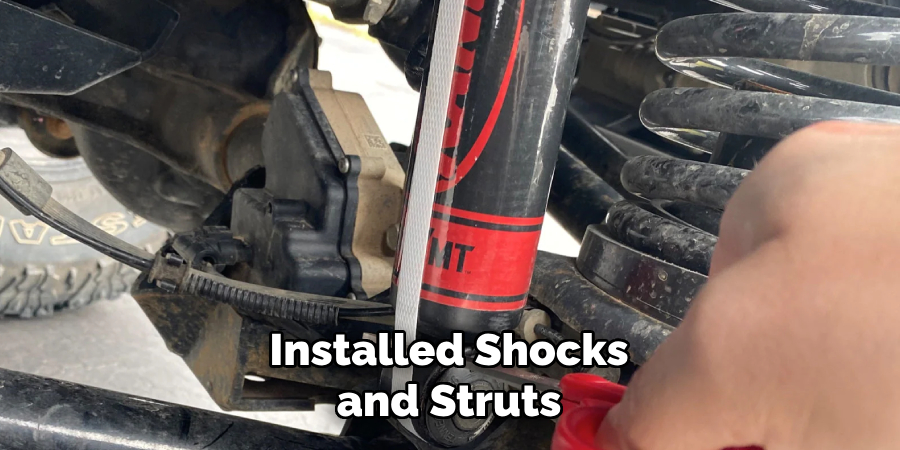
One of the primary reasons for a rough ride in a Jeep Wrangler is its factory-installed shocks and struts. These components are responsible for dampening the jolts and bumps that come from uneven or bumpy roads.
The stock shocks and support on a Wrangler are designed to withstand harsh off-road conditions and heavy payloads, which can result in a stiff and uncomfortable ride on normal roads. Upgrading to aftermarket shocks and struts intended for everyday driving can significantly improve your Wrangler’s ride quality.
Step 2: Replacing Springs
Aside from the shocks and struts, the springs also play a crucial role in a vehicle’s suspension system. The stock springs on a Jeep Wrangler are designed to provide stability and support for off-road driving. However, these heavy-duty springs can also contribute to bumpy rides on pavements. Replacing the stock springs with softer aftermarket options can help absorb shocks and improve overall comfort on normal roads.
Step 3: Installing Sway Bars
Sway bars, also known as stabilizer bars, help to reduce body roll and improve handling. The stock sway bars on a Jeep Wrangler are designed for off-road use and can be too stiff for everyday driving, resulting in a harsh ride. Upgrading to aftermarket sway bars with adjustable stiffness settings allows you to fine-tune your suspension for a smoother ride.
Step 4: Checking Tire Pressure
Proper tire pressure is crucial for a smooth ride in any vehicle. The recommended tire pressure for a Jeep Wrangler can vary depending on the model and year, so be sure to check your owner’s manual or do some research beforehand. Keeping your tires inflated to the correct pressure can improve handling and reduce vibrations, resulting in a more comfortable ride.
Step 5: Balancing Tires
In addition to proper tire pressure, it’s also essential to have your tires balanced regularly. Unbalanced tires can cause vibrations and uneven wear, affecting your ride’s overall comfort. Balancing involves adding small weights to the wheels to eliminate weight discrepancies, resulting in a smoother and more comfortable ride.
Step 6: Aligning Wheels
Improper wheel alignment can also contribute to a rough ride in a Jeep Wrangler. Misaligned wheels can cause vibrations, uneven tire wear, and decreased handling ability. It’s essential to have your wheels aligned regularly, especially if you’ve recently installed aftermarket suspension components.
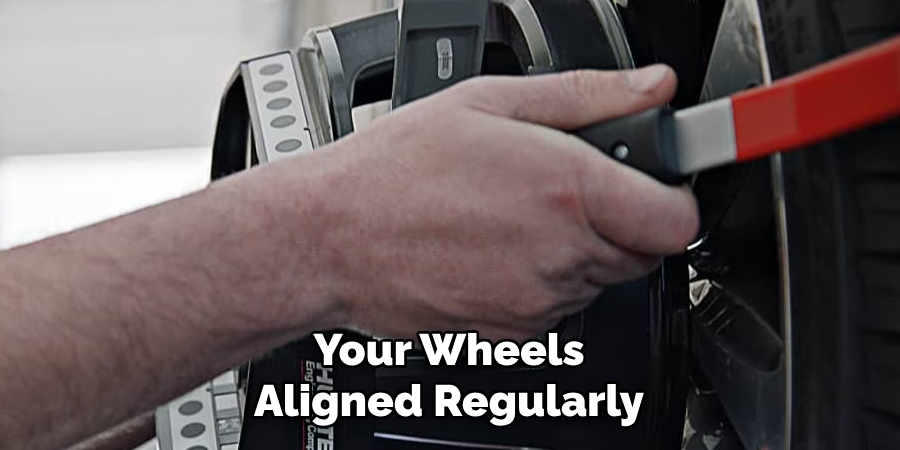
Step 7: Installing Bump Stops
Bump stops are rubber or polyurethane pads that prevent your vehicle’s suspension from bottoming out. If your Jeep frequently hits the bump stops, it can create a jarring and uncomfortable ride. Installing additional or more extended bump stops can help prevent this and improve overall ride quality.
Step 8: Adding Insulation
The Wrangler’s interior is notorious for being loud due to its removable roof and doors. This noise not only affects the driving experience but it can also contribute to a rough ride. Adding sound insulation to your Jeep’s interior can help reduce noise and vibrations, resulting in a smoother and more comfortable ride.
Step 9: Upgrading Bushings
The bushings are small rubber or polyurethane components that cushion between metal parts in the suspension system. Over time, these bushings can wear out and contribute to a harsh ride. Upgrading to aftermarket polyurethane bushings can help absorb shocks and improve comfort.
Step 10: Regular Maintenance
Last but not least, performing regular maintenance on your Jeep Wrangler’s suspension system is essential. This includes checking for worn or damaged components, replacing necessary parts, and lubricating moving parts. Neglecting maintenance can not only affect ride quality but also lead to more significant issues down the road.
By following these steps and making necessary upgrades, you can significantly improve the ride quality of your Jeep Wrangler without breaking the bank. Remember that every vehicle is different, so it’s essential to research and consult with professionals before making any modifications.
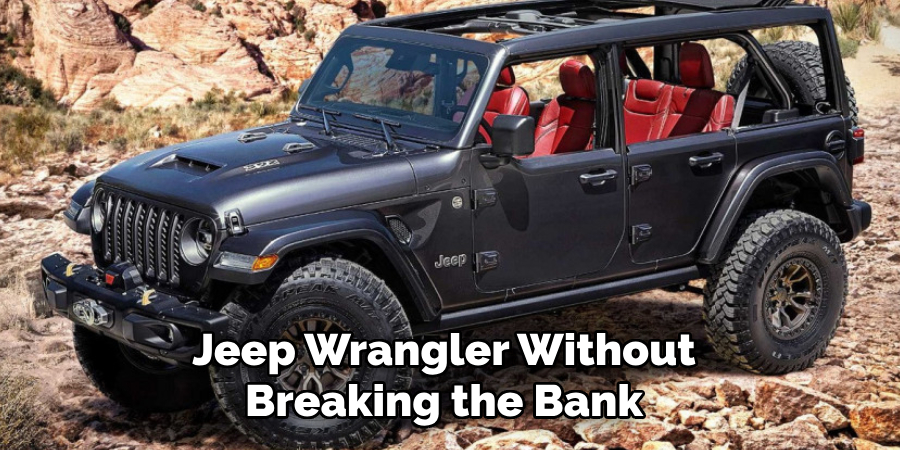
With the right upgrades and maintenance, you can enjoy a smoother and more comfortable ride in your Jeep Wrangler on both and off-road adventures.
8 Things to Avoid While Making a Jeep Wrangler Ride Smoother
While there are many things you can do to improve the ride quality of your Jeep Wrangler, there are also some things that you should avoid. These include:
1) Oversized Tires
While larger tires may look cool and improve off-road capabilities, they can also significantly affect ride quality on normal roads. Oversized tires are heavier and require more effort to turn, resulting in a rougher ride and decreased fuel efficiency.
2) Cheap Suspension Components
Opting for cheaper aftermarket suspension components may be tempting, but these can often result in a harsher ride and potentially cause safety issues. Investing in quality suspension components specifically designed for your Jeep Wrangler is essential.
3) Improperly Adjusted Suspension Components
Adjustable suspension components, such as sway bars and shocks, must be appropriately adjusted for optimal performance. Improper adjustments can result in a smooth and comfortable ride.
4) Overloading the Vehicle
Overloading your Jeep Wrangler with heavy cargo or passengers can significantly affect ride quality. Staying within the recommended weight limits and distributing weight evenly for a smoother ride is essential.
5) Neglecting Tire Maintenance
As mentioned earlier, proper tire pressure and regular balancing are crucial for a smooth ride. Pay attention to these maintenance tasks to avoid a bumpy and uncomfortable ride.
6) Skipping Wheel Alignments
Improper wheel alignment can affect ride quality and lead to uneven tire wear and potential safety hazards. It’s essential to have your wheels aligned regularly, especially after modifying the suspension system.
7) Using Low-Quality Insulation
Adding insulation to your Jeep Wrangler’s interior can significantly reduce noise and vibrations, but it’s crucial to use high-quality materials specifically designed for automotive use. Using low-quality insulation can result in poor soundproofing and potentially cause safety hazards.
8) Ignoring Strange Noises or Vibrations
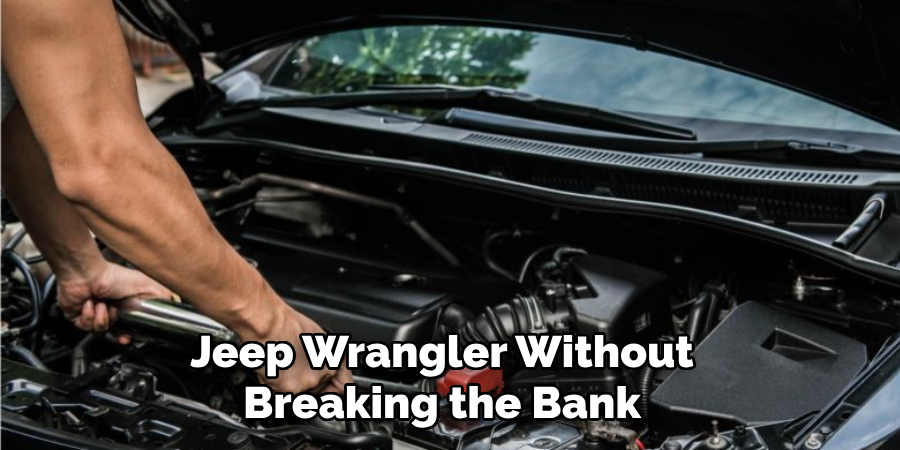
If you notice any unusual noises or vibrations while driving your Jeep Wrangler, a professional must check it out. These could be indicators of more significant issues with your suspension system, which can affect ride quality and potentially compromise safety.
Frequently Asked Questions
Can I Make My Jeep Wrangler Ride Smoother Without Modifying the Suspension System?
Yes, there are several things you can do to improve the ride quality of your Jeep Wrangler without making significant modifications to the suspension. These include regularly maintaining tires, balancing and aligning wheels, and adding insulation.
How Often Should I Perform Maintenance on My Jeep Wrangler’s Suspension System?
It’s recommended to perform regular maintenance on your Jeep Wrangler’s suspension system every 12,000 miles or once a year, whichever comes first. However, more frequent maintenance may be necessary if you frequently drive off-road or significantly modify the suspension system.
Conclusion
In conclusion, improving the ride quality of your Jeep Wrangler is not only possible but also essential for a smoother and more enjoyable driving experience.
From checking your tire pressure and suspension components to upgrading to performance parts and investing in aftermarket accessories, there are various steps you can take to achieve a smoother ride. Remember that every Jeep Wrangler is unique, and what works for one may not work for another.
Experimenting and finding what works best for your specific vehicle is crucial. And let’s remember the importance of regular maintenance to ensure optimal performance of all the components responsible for a smooth ride.
By following these tips on how to make a Jeep Wrangler ride smoother and recommendations, you’ll be on your way to conquering rough terrains with ease while still enjoying a comfortable ride on the road.

About
JeepFixes Team is a skilled author for Jeep Fixes, bringing 6 years of expertise in crafting a wide range of jeep fixes. With a strong background in jeep fixes work, JeepFixes Team’s knowledge spans various types of fixtures, from decorative pieces to functional hardware, blending precision with creativity. His passion for jeep fixes and design has made him a trusted resource in the industry.
Professional Focus:
Expert in Jeep Fixes : JeepFixes Team aesthetic specializes in creating durable and innovative jeep fixes, offering both appeal and functionality. His work reflects a deep understanding of jeep fixes techniques and materials.
Sustainability Advocate : He is dedicated to using sustainable practices, ensuring that every fixture is crafted with eco-friendly methods while maintaining high-quality standards.
In his writing for jeep fixes, JeepFixes Team provides valuable insights into the latest trends, techniques, and practical advice for those passionate about jeep fixes, whether they are professionals or DIY enthusiasts. His focus on combining artistry with engineering helps others discover the true potential of jeep in design.
